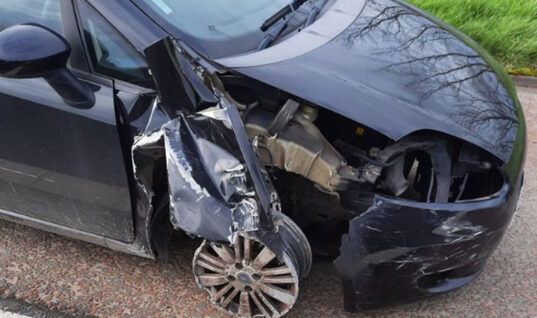With light commercial vehicles (LCV) subjected to considerable pressure and stress, together with the average age of LCVs in the EU being 10.9 years, this segment of the vehicle parc offers significant service and repair opportunities for workshops, ZF Aftermarket has said.
33.2 million LCVs (up to 3.5 tons gross vehicle weight) are in circulation throughout the European Union, with the UK alone hosting 4.4 million vans.
Many businesses utilise the full permissible LCV payload in daily usage.
While the chassis itself may be designed for this kind of usage, compression ball and tie rod joints, stabilizer links and other steering and chassis parts suffer considerably under permanent load.
ZF Aftermarket therefore recommends garages visually inspect the chassis and test it for height clearance each time an LCV comes in; replacing damaged and worn components as applicable.
Volkswagen T5 repair tips
The Volkswagen T5 LCV model range is one of the most popular vehicles in the segment under 3.5 tons.
Under its Lemförder brand, ZF Aftermarket supplies a comprehensive range of chassis parts, including control arms, stabilizer links and rubber-bonded metal mounts.
Suspension-strut mount
Wear damage on the suspension-strut mount often occurs on this vehicle due to the undersized ball bearing in the initial design.
Volkswagen subsequently replaced the component with a version with a larger bearing, although both versions can still be found in the market.
ZF Aftermarket offers both variants but advises customers to upgrade to the new version where the initial version is still fitted.
When removing the affected parts, the technician must always note which of the two variants is fitted to the vehicle.
A damaged spring plate on the earlier bearing variant means having to replace the entire assembly as new spring plates are no longer available.
The garage must therefore install a new suspension-strut mount, the spring plate and the ball bearing.
ZF Aftermarket also recommends always replacing these parts per axle to ensure consistent vehicle handling on both sides.
VW T5 control arm
Certain points need to be considered when replacing the T5 control arm.
After removing the old part, the mechatronics technician should clean the supporting surface of the ball stud on the steering knuckle using sandpaper, followed by a suitable cleaning agent.
Otherwise, rust and dirt particles may penetrate the joint of the new control arm via the ball stud, resulting in rapid wear.
The technician must not tighten the mounting bolts and nuts with the suspension still in the fully unloaded state.
Otherwise the rubber bearings would be deformed when lowering the vehicle onto the wheels.
This undesirable preloading of the bearings may lead to premature wear.
The next work step is to lower the vehicle until the chassis is fully compressed.
There may, however, be regulations governing the position in which the bolts and nuts are tightened depending on the vehicle model – so note the VMs installation instructions.
All chassis data specified by the vehicle manufacturer relates to the design position.
A wheel-free four-post car lift can be useful here.
It allows the bolts and nuts to be tightened to the torque specified by the manufacturer.
Finally, the technician must check and set the wheel alignment according to the manufacturer’s specifications.
For further information about ZF Aftermarket, select ‘more details’ below.







